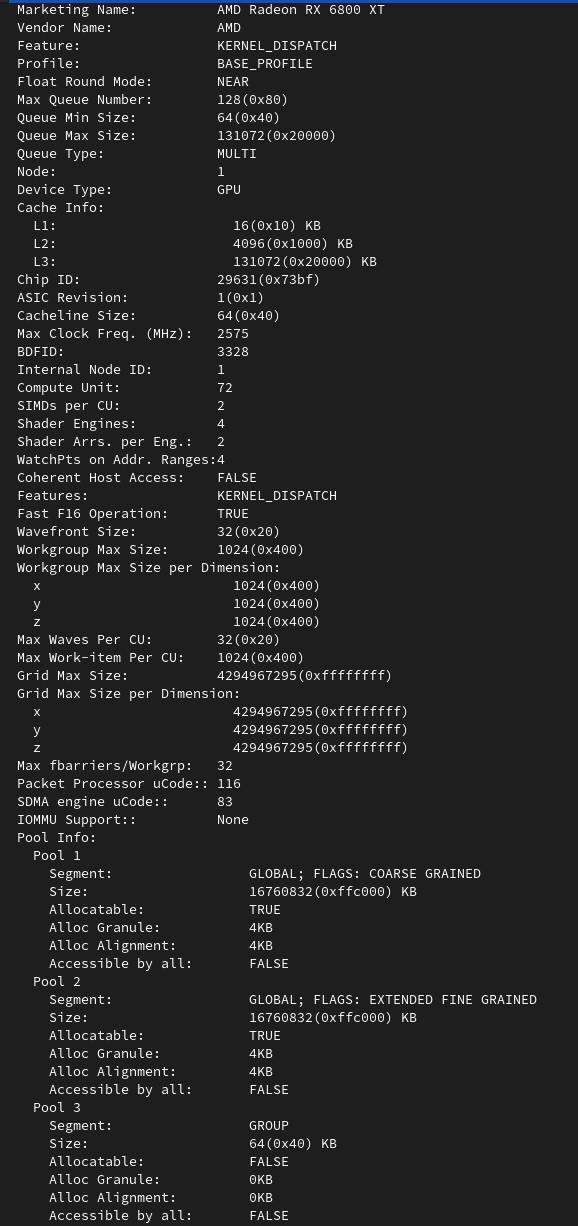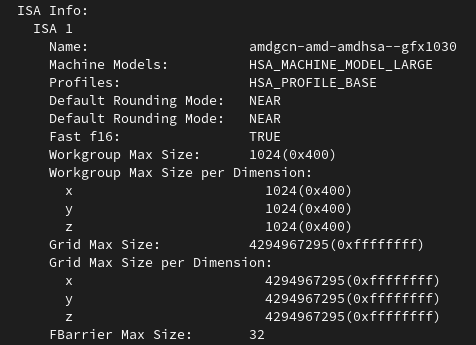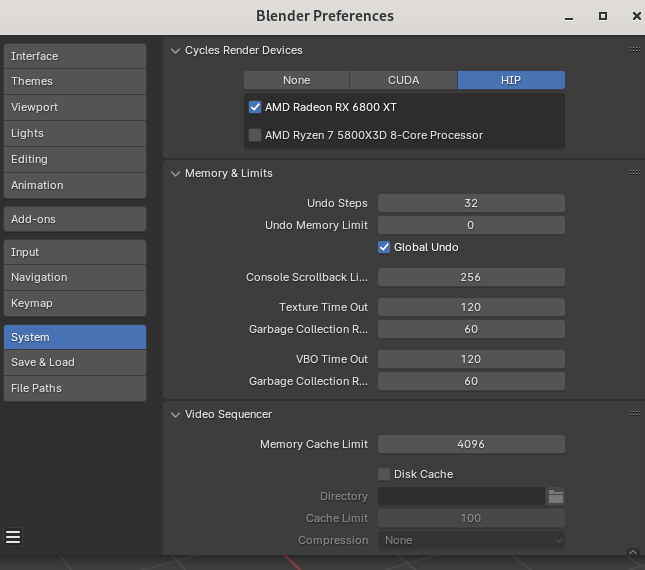SOLUTION:
I was missing this package sudo dnf install rocm-hip-devel as per instructions here:
https://fedoraproject.org/wiki/SIGs/HC
Hi, I’m trying to get GPU acceleration on AMD to work in Blender 4.1 but I can’t seem to be able to. From what I’ve seen it should be working with ROCm just fine but I had no luck with it.
I’m using Fedora 40 GNOME with Wayland and my GPU is RX 6800 XT.
System is up to date. I’ve also installed all these packages:
sudo dnf install rocminfo
sudo dnf install rocm-opencl
sudo dnf install rocm-clinfo
sudo dnf install rocm-hip
and restarted system after.

rocminfo gives me this


rocm-clinfo gives me this


___``___
Pro tip: NEVER try setting up ROCM/hip directly on hardware. AMD provides a docker container with it already setup.
Why? Also I didn’t know about any docker container and never seen any mention of it when looking up solutions.
Because it’s a pain and can brick your graphics driver…
Does docker require virtualisation to be enabled?
No, this is not virtualization, it is a bunch of libraries and packages running on your native kernel and hardware
On Fedora you should use Podman for this
https://discussion.fedoraproject.org/t/rocm-container-questions-on-securing-containers/83955
Thanks, I’ll look more into it once I get more time but from a glance this seems a bit too convoluted for my needs.
No this is the safe approach. Installing a 3rd party
develpackage may likely break your systemIf it breaks, it breaks… But I’ll give it a try on my laptop with PopOS
HIPS/ROCm targets 7k series. At least that was what I recall from my research almost a year ago when I was shopping for a machine. The 7k stuff is from the enterprise design team side of AMD, while the 6k series and before were like a totally separate thing inside the company.
I got the impression 6k and before were only targeted at gaming. IIRC there was some project talked about a few months ago about doing some more back porting of the kernel API stuff, but I didn’t save the reference. I think Brody Robertson posted something about it on YT/Odyssey etc.
I’m quite certain it’s supposed to be working with 6000 series and up… I’ve even seen people run it on 5000 series RDNA cards in Blender like 1.5y ago on Fedora 37.
edit:
https://www.phoronix.com/review/blender-32-gpus
Officially, Blender 3.2 works with RDNA2 and RDNA(1) graphics cards on Linux with HIP. I was able to test all of my available Radeon RX 6000 (RDNA2) graphics cards with Blender 3.2, yeah! But with all my RDNA1 tested graphics cards they all yielded Blender 3.2 having a segmentation fault.
I’m presently having issues with 40 and old Stable Diffusion/ComfyUI related to torch and stuck in a dependency loop. Almost defiantly unrelated.
When I was looking into AMD a year ago or so, the 7k thing was in a conference somewhere on YT. It had to do with some kinds of conflicts or something like that in how 7k versus the older stuff was designed and how CUDA is set up. I really don’t recall the details well. I was about to pull the trigger on a 6k setup, and after seeing that info I went the other direction.
I was researching the CPU scheduler at the time and I may be blurring this and the GPU stuff together when I say: I think it was the open source team that was talking about this in a Linux Plummers conference, it might have been about the enterprise GPU stuff and about HIPS or something like that. Sorry I’m fuzzy on it.
Edit: I was always only looking for the AI side, so the back end/kernel/API was all I cared about.
I just got it to work, I’ll update the original post with solution.

edit:
now I need to figure out if I can this up and running https://github.com/vosen/ZLUDA as it seems quite a bit interesting for both of our use cases though I’m fine with ROCm for the meantime, got 3x faster render speed vs just using my CPU
Awesome, glad you got it working. ZLUDA indeed was the project I had seen info about and was doing the back porting.
deleted by creator





